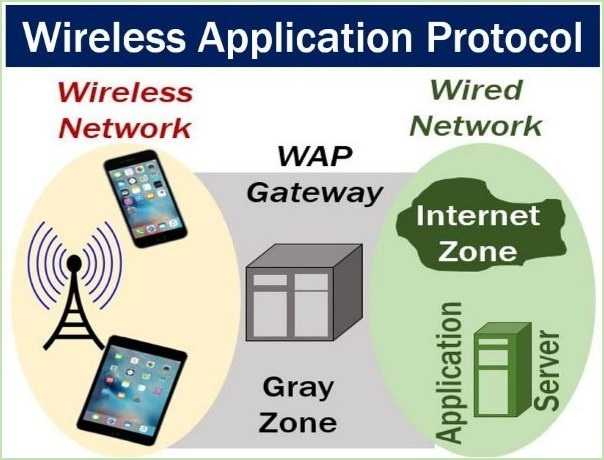
Date First Published: 30th January 2022
Topic: Computer Networking
Subtopic: Internet Protocols
Article Type: Computer Terms & Definitions
Difficulty: MediumDifficulty Level: 6/10
Learn more about what a wireless application protocol is in this article.
Not to be confused with a Wireless Access Point.
A wireless application protocol, often abbreviated to a WAP, is a technology that enables information to be retrieved over a mobile wireless network, such as email, mobile banking, and games. It also includes mobile internet-based services, such as information about the weather, geographical location, flight information, and more.
The WAP protocol can be used for transferring documents, such as webpages over a network to mobile phones or other handheld wireless devices. There are three levels of the wireless application protocol, which are Client, Gateway, and Origin server. All mobile URL requests via a network are sent to a wireless application gateway using WAP and the request is known as an encoding request, which is translated through WAP gateway and then forwarded as a HTTP request over the internet.
WAP is a very useful technology as it is fast-paced, open-source, supported by most mobile devices, and realtime data can be sent using WAP. Interactive data services for mobile service providers were limited before the introduction of WAP, but another well-known wireless data protocol was provided by the Japanese i-mode system.
WAP was first introduced in October 1999 with the first appearance of the Nokia 7110. It was first launched by Telfort BV, a Dutch mobile phone provider and gained popularity in the early 2000s. In 2003 and 2004, WAP became much more widely used with the introduction of wireless services, such as Vodafone Live and T-Mobile T-Zones as well as other services that were easily accessible at that time.
However, WAP was mostly superseded by more modern standards in the 2010s. The use of WAP declined by 2013 and for a number of years, it has not been a commonly used technology on mobile web. It is unnecessary for mobile internet browsers to use WAP markup for webpage compatibility because most mobile web browsers are compatible with and can fully make use of HTML, CSS, and JavaScript.
If so, it is important that you tell me as soon as possible on this page.
Network Services Network Setups Network Standards Network Hardware Network Identifiers Network Software Internet Protocols Internet Organisations Data Transmission Technologies Web Development Web Design Web Advertising Web Applications Web Organisations Web Technologies Web Services SEO Threats To Systems, Data & Information Security Mechanisms & Technologies Computer Hardware Computer Software Ethics & Sustainability Legislation & User Data Protection